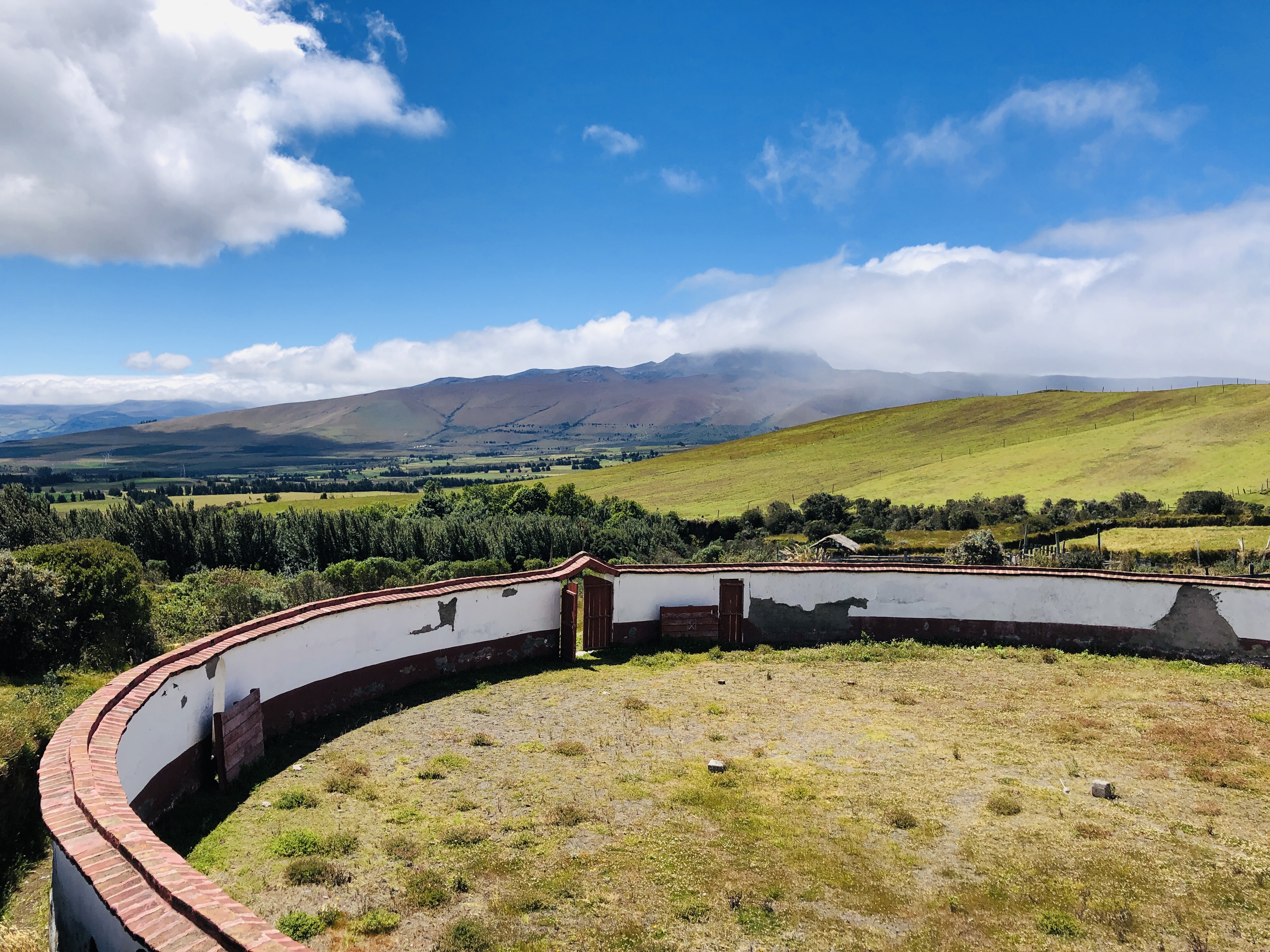Visits to the Houses of Frida Kahlo and Pablo Neruda by Tim Ghazzawi:
From the outside, her house is a high-walled compound, painted in a shade of blue similar to one Frida Kahlo herself once described in her diary as “electricity.” Its green windows and doorways are closed and barred, framed in burnt orange. Large trees on the surrounding sidewalks cast shade upon its walls. I felt lured there by its mystery, rather than invited by its owner. It was a museum open to the public and yet still felt very much like her private home and space.
On the inside, though, a more whimsical experience. The walkways of its central plaza are asymmetrical and the unlabeled sculptures arranged there could easily be mistaken for being haphazardly placed. The various plants and shrubs in some areas seem wild and overgrown. Muted shades of yellow and red mix with contrasting tilework, concrete, glass, and stone. The trees protect from the sun but never loom.
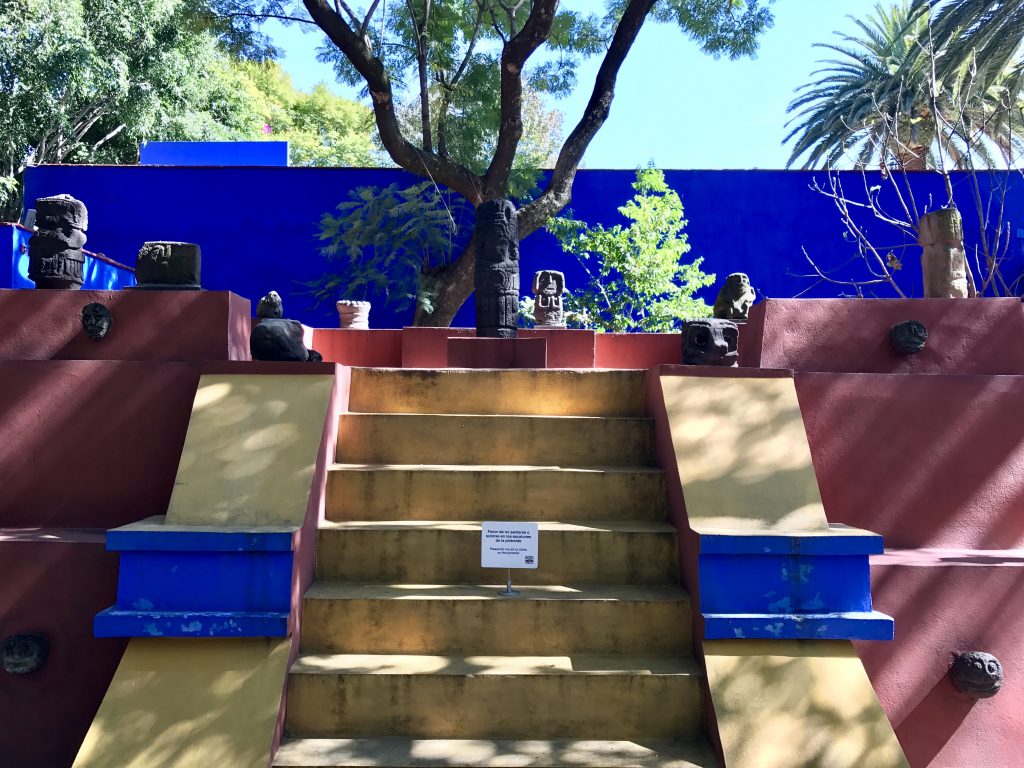
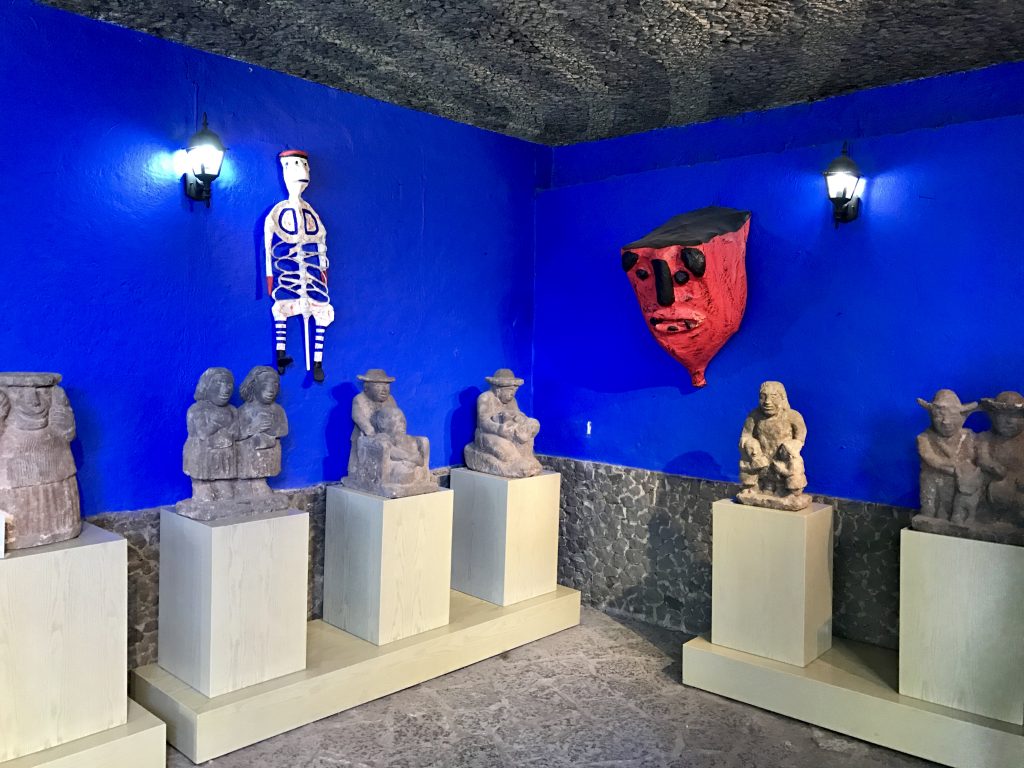
As I walked the rooms of Frida Kahlo’s childhood home I found them each playfully decorated and maintained. The mustard-colored kitchen and dining room are filled with ceramic dishes and earthen pots. Her studio displays old art supplies, some of which remain near easels, as if ready to be painted with right then and there. Her bedroom still retains intimate photos and figurines Kahlo kept on a shelf above her bed. Some lesser known artwork of hers hangs on the walls. And each room opens up to the plaza in some way.
She is perhaps most famous for her unflinching self-portraits. I knew her for her eyebrow. But I did not know she’d been disabled by polio at age 6 and almost lost her life when at age 18 a bus accident left her impaled by an iron rail. I wondered whether her home was designed to reflect such pain or mitigate it.
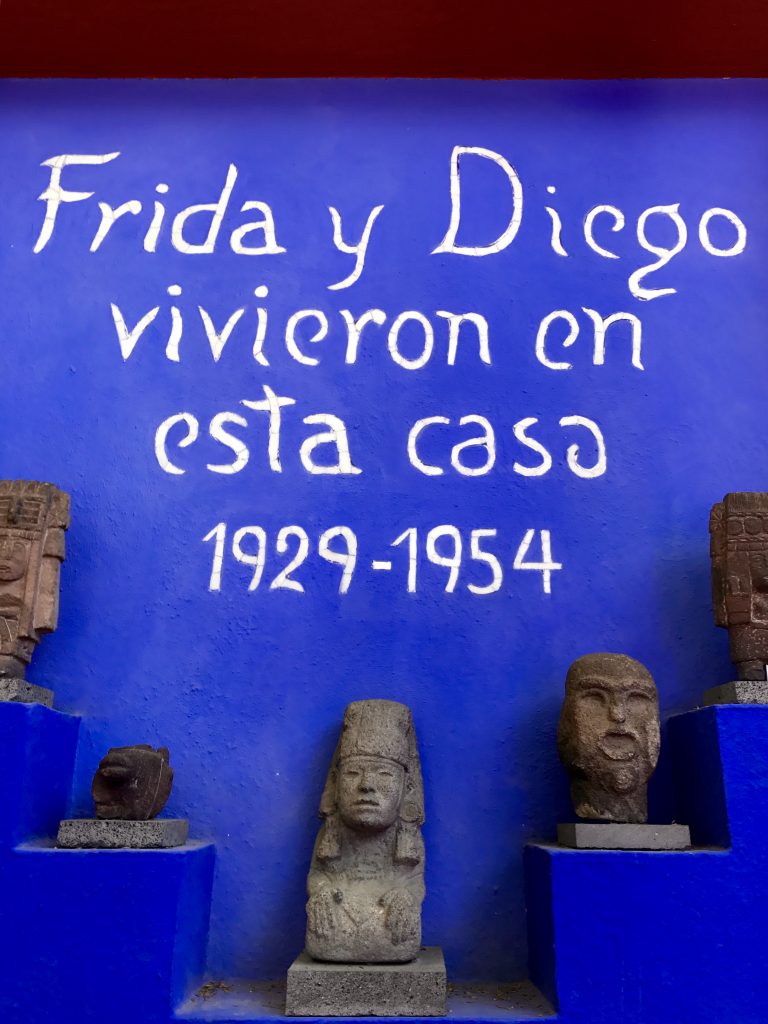
Over 4,000 miles from the Frida Kahlo Museum in Coyoacán, Mexico is another blue house, La Chascona, built by poet Pablo Neruda, who resided there with his mistress in Santiago, Chile between 1953 and 1973. It’s a lighter shade of blue than Kahlo’s but still enveloping and comes with its own logo of sorts, a smiling, blooming, encased sun. I’d studied much of Neruda’s poetry in high school and college and taught it throughout my literature courses. It’s eclectic and experimental and flamboyant, and I found his architectural design and home decor to function in the same way (a secret passageway from his bedroom to the dining room allowed Neruda to surprise his dinner guests in unannounced spontaneity). The house blends the indoor and outdoor with courtyards and plazas and maze-like staircases and walkways that connect to different parts of the compound. In one green space, two chairs sit idly. An outdoor bar provides patrons with distant views of the downtown skyline.
His mistress’ name was Matilde. Near the fireplace in his living room is a portrait of her, a woman with exaggerated red curls. Hidden within the portrait is Neruda himself, a profile of his amongst the locks of hair. A subtle but not secret display of affection for Matilde, who later became his third wife. The painter of the portrait? None other than Frida Kahlo’s husband, Diego Rivera.
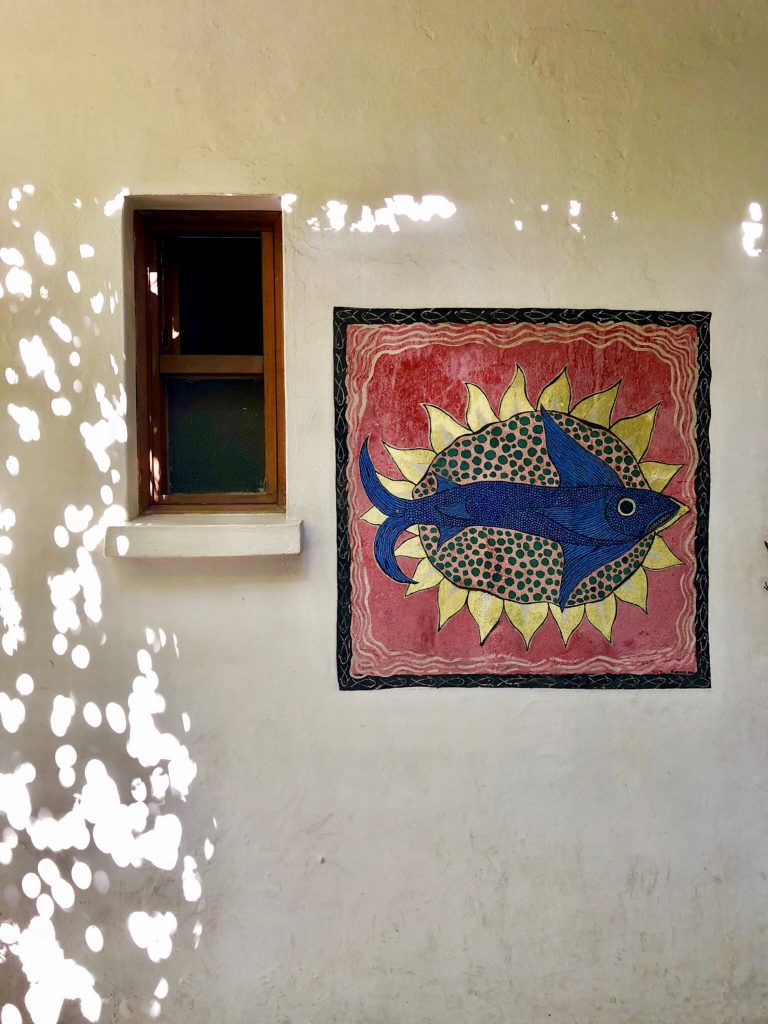
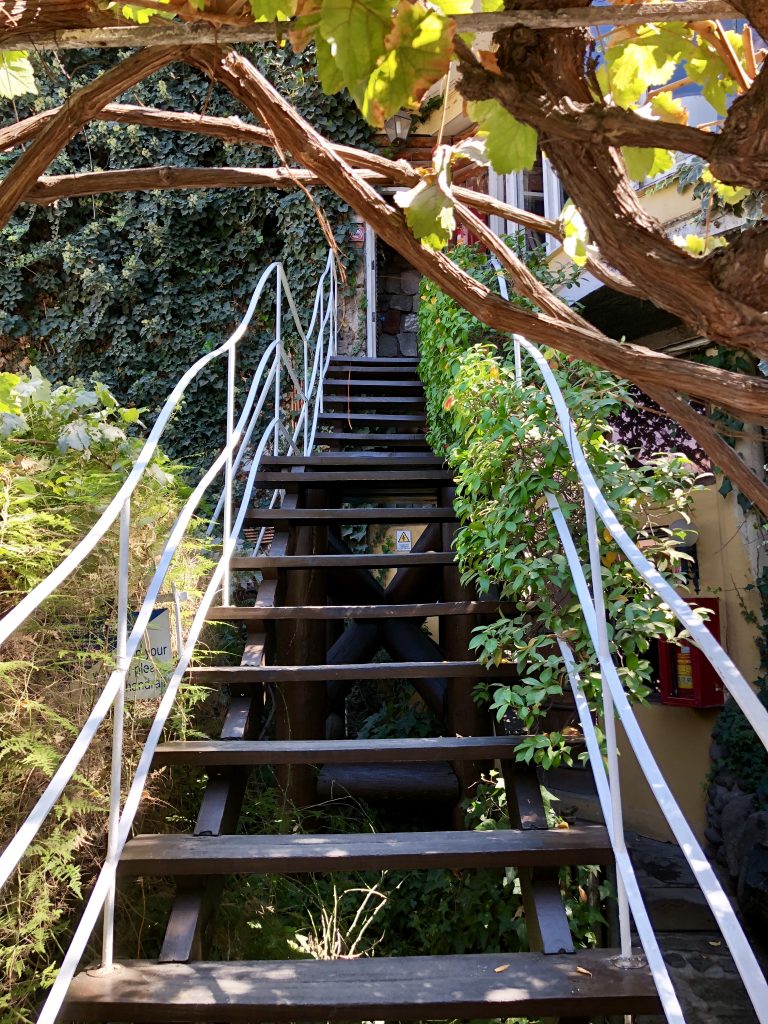
It is unsurprising that Kahlo and Neruda used their residences as canvasses for their creativity. Their homes are artistic expressions in larger-than-life forms and mirror their personal quirks and pains, passions and humor. I remember walking the grounds of both places and thinking aloud about how unique and interesting and yet troubled they both must have been to have created and lived in such provocative homes. On display at La Casa Azul, another name for Kahlo’s, is a portrait of watermelons, one of which is carved out and inscribed with the words: “VIVA LA VIDA” or “Long live life.” I can’t say for sure why their homes were painted blue, but, as they stand, both seem timeless.
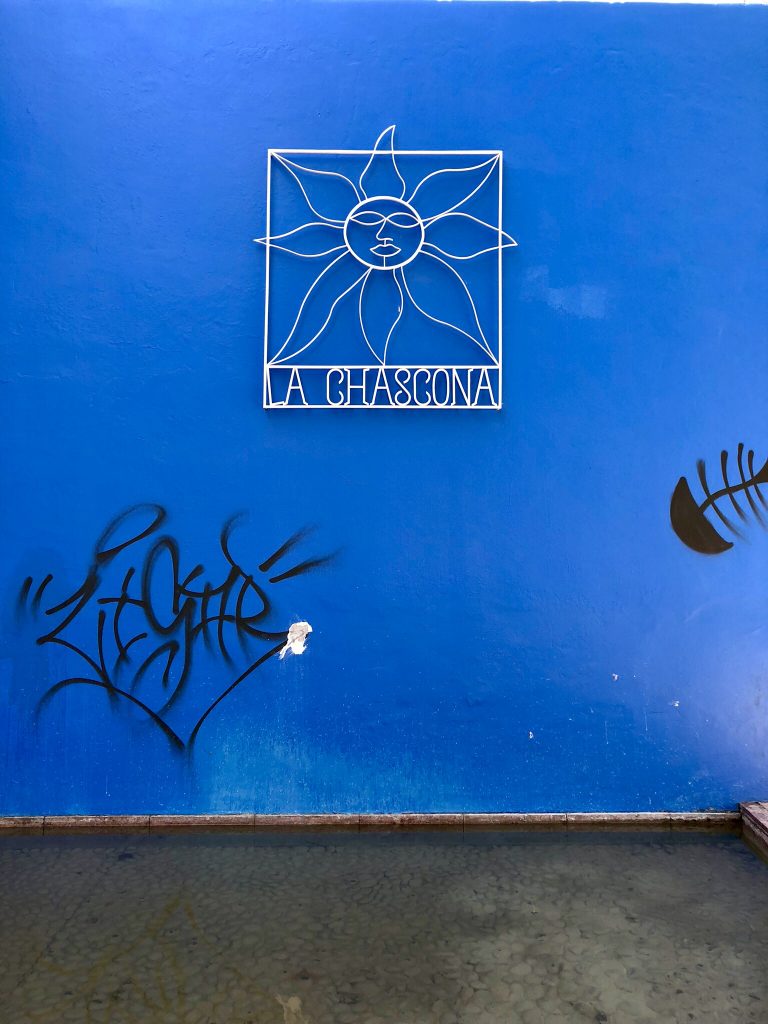
THE FACTS
I traveled to Mexico with my brother and dad in December of 2016 and to Chile with my brother in the spring of 2018. La Casa Azul is located in Coyoacán, a borough of Mexico City. La Chascona is located in the Barrio Bellavista neighborhood of Santiago, Chile’s capital. Visits to the houses of Frida Kahlo and Pablo Neruda are experiences not to be missed.
MEXICO CITY, MEXICO
Londres 247, Colonia del Carmen
Delegación Coyoacán, CP 04100
Ciudad de México, México
+52 (55) 5658 5778
SANTIAGO, CHILE
Fernando Márquez de la Plata 0192
Barrio Bellavista, Providencia
Santiago, Chile
+56-2-2777 87 41 / +56-2-2737 87 12
(For more information about my trip to Mexico, check out the story “Dead Dolls”)
SANTIAGO, CHILE
Coronel Santiago Bueras 121
Santiago, Región Metroplitana, Chile
(For more information about my trip to Mexico, check out the story “Dead Dolls”)
SANTIAGO, CHILE
Antonia López de Bello 40
Recoleta, Región Metropolitana, Chile
+56 2 2732 9214
*With a rooftop speak-easy above it!
Loreto 40
Recoleta, Región Metropolitana, Chile
+56 2 2881 3937
*With some of the wildest interior design you’ll ever see. Picture towering flamingos.
José Victorino Lastarria 276
Santiago, Región Metropolitana, Chile
+56 2 2638 9893
*With the best ceviche I’ve ever tasted.
- Uber is everywhere in Mexico City. I used it frequently when in a pinch. To get from the Historic Center to Kahlo’s house is at least a 15 minute drive. A train/bus combination might take up to an hour. If you take Line 2 to the General Anaya station, it’s a 15 minute walk to the museum.
- Make a day of Coyoacán. The line to La Casa Azul is inevitably long and you’ll want to take your time enjoying the grounds. In the surrounding neighborhood, there are quaint markets and plazas to explore.
- La Chascona’s popularity pales in comparison to that of Kahlo’s abode, so expect a quieter experience there. The museum offers a helpful guided audio tour that provides insight to the intracices of each of Neruda’s spaces.
If you enjoyed reading about my visits to the houses of Frida Kahlo and Pablo Neruda, you might also check out the following stories related to other Latin American adventures:


